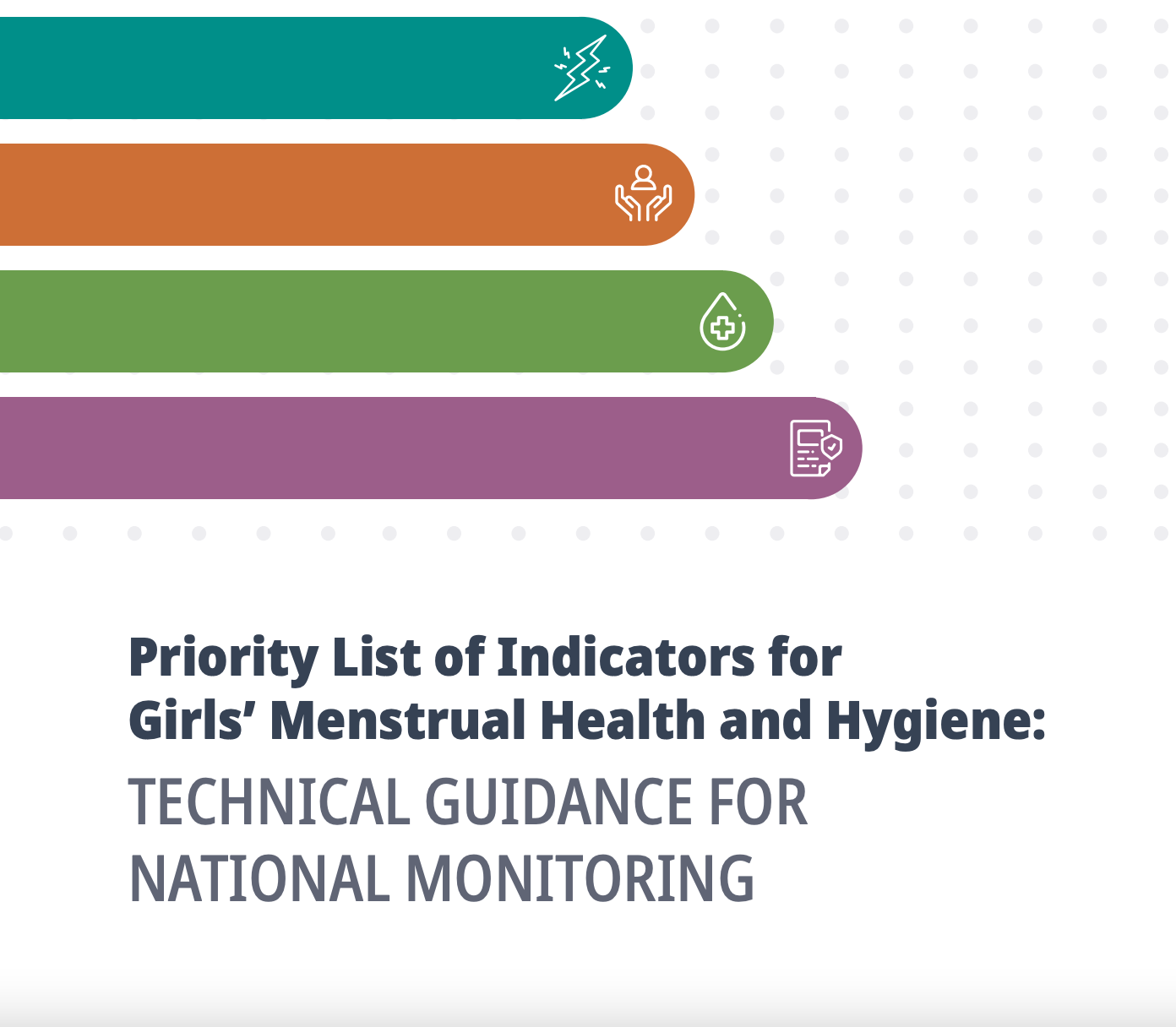Priority List of Indicators for Girls’ Menstrual Health and Hygiene: Technical Guidance for National Monitoring
Introduction:
There is growing global recognition of menstrual health and hygiene (MHH) as an important health, education, rights, and gender equality issue.1–4 As efforts to support MHH gain momentum globally, the lack of adequate validated indicators with related measures is a critical barrier to progress. At national level, the absence of standardized indicators and related measures limits understanding MHH circumstances across populations and over time. It also impedes the evaluation of policies and programs designed to change them.
A lack of standardized indicators curtails efforts to set and assess progress against targets that support MHH, unify approaches, and hold governments and service providers to account. To monitor the main domains of MHH, indicators and measures most needed are those aligned to key sectors, including Health [sexual and reproductive health (SRH) and psychosocial health], Education, Gender, and Water, Sanitation, and Hygiene (WASH).5 With the exception of recent efforts by the The WHO/UNICEF Joint Monitoring Programme for Water Supply, Sanitation and Hygiene (JMP) to include MHH in WASH monitoring,6 standardized MHH-related indicators have yet to be incorporated into these key sectoral areas for national level monitoring in most countries, despite the potential influence of menstruation on the respective sectoral outcomes, including their contribution to reaching certain Sustainable Development Goal (SDG) targets.
To support countries to monitor progress on MHH for adolescent girls in and out of school, a global collaboration of MHH experts worked together with key stakeholders and leaders from four exemplar countries to develop a short list of priority indicators (the short list). These indicators monitor MHH across priority domains and are intended to enable comparability across countries2 and over time.
Purpose and Content of Guidance Note
The purpose of this guidance note is to provide technical guidance on a recommended short list of indicators to monitor national progress towards supporting MHH among adolescent girls. The guidance note briefly describes the methods used to develop the short list and considerations for collecting data on MHH, focusing particularly on this population. The rationale for each indicator, its usefulness and challenges in data collection, and guidance for measurement are presented along with details on data sources for each and evidence of their prior usage at the time of writing.
Development of the Short List
A collaboration of MHH experts (the core group) in consultation with national-level experts/stakeholders engaged in monitoring MHH in four exemplar countries led the short list development. Efforts were supported by members of a Global Advisory Group of monitoring experts. For detailed methods on the development of the short list, which included four steps, please see Annex 1 in the full document.
Short list of Priority Indicators
A short list of 21 priority indicators and related measures was identified. These are summarized in Table 1 and presented according to key menstrual health domains identified to comprehensively address MHH among adolescent girls. The table also notes which level (individual, school, national) data would be collected at for each indicator. Further details about each indicator are provided in the technical guidance section below.
Read the full report here.
Citation:
Priority List of Indicators for Girls’ Menstrual Health and Hygiene: Technical Guidance for National Monitoring. (2022). Global MHH Monitoring Group. Columbia University. New York.
This work was supported, in whole or in part, by the Bill & Melinda Gates Foundation INV-015857. Under the grant conditions of the Foundation, a Creative Commons Attribution 4.0 Generic License has already been assigned to the Author Accepted Manuscript version that might arise from this submission. Our sincere gratitude to Katherine Millsaps for her support conducting the global desk review, and to Stefan Peterson for the design and layout of the guidance note.
